|
【Shangyuan Site】The property of a flower
[2023-9-26 17:16:52]
【Shangyuan Site】 The property of a flower
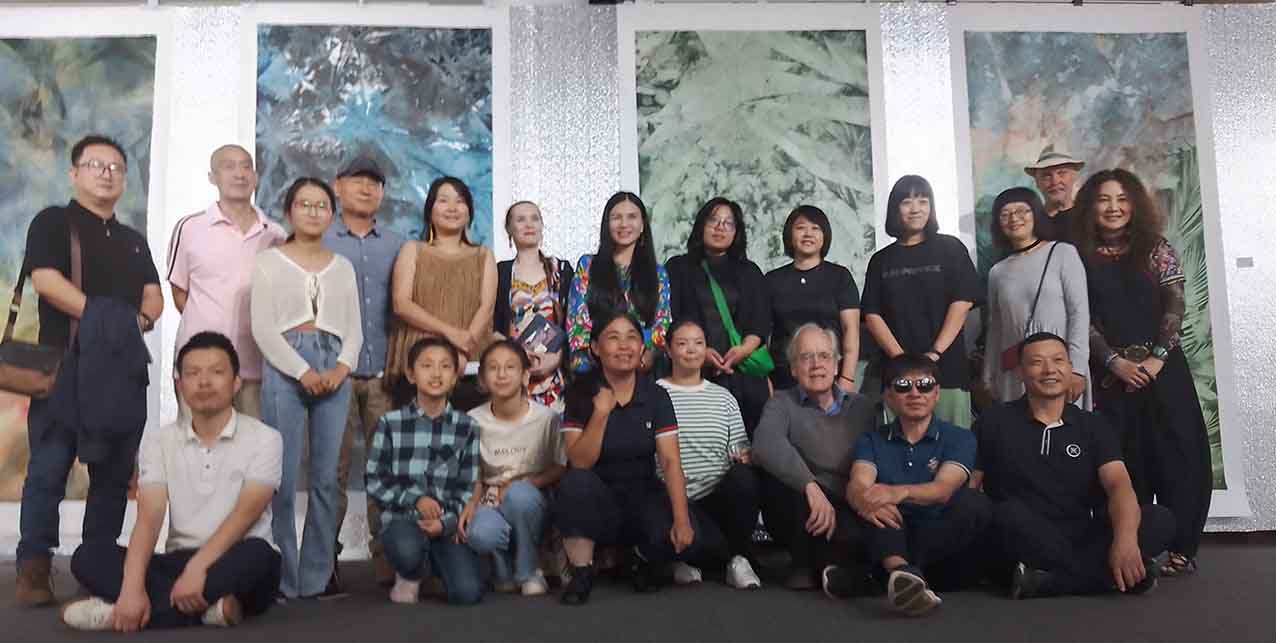
🌸學術主持:大衛 .布魯貝克(美)、段少鋒
Academic support:David Brubaker 、Shaohua Duan
🌼展覽策劃:韓淑英
Curator: Shuying Han
🍀策展助理:昭昭
Curatorial Assistant:joe
🌹主辦單位:上苑藝術館
Sponsor: Shangyuan Art Museum
🌸參展藝術家: 陳魚 、程小蓓、董曉麗、韓祺、 韓淑英 、 劉姝銘、劉娜 、劉冰凌、 Ludwika Ogorzelec(波蘭)、 李俊誼 、 彭怡、 曲巍巍 、孫鵬 、(孫少坤)、 陶艾民、王帥、王海燕、王海迪、吳潔、 吳敬 、夢露、姚麗雙、 趙雅杰、Female artists: Chen Yu, Cheng Xiaopei, Dong Xiaoli, Han Qi,Han shuying, Liu Shuming, Liu Na, Liu Bingling,Ludwika Ogorzelec、Li Junyi, Peng Yi, Qu Weiwei, Sun Peng、 (Sun Shaokun) , Tao Aimin, Wang Shuai, wang Haiyan, Wang Haidi, Wu Jing, Wu Jie, Yao Lishuang, Zhao Yajie,
🌸開幕時間:2023年9月23日 15:00 Opening:September 23,2023
🌼展覽時間:2023年9月23日~10月3日 Duration:September 23,2023to October 3,2023
🌹地址:北京市懷柔區橋梓鎮沙峪口村上苑藝術館二號展廳
Venue:Exhibition Hall No. 2, Shangyuan Art Museum,Shayukou Village, Qiaozi County, Huairou District, Beijing
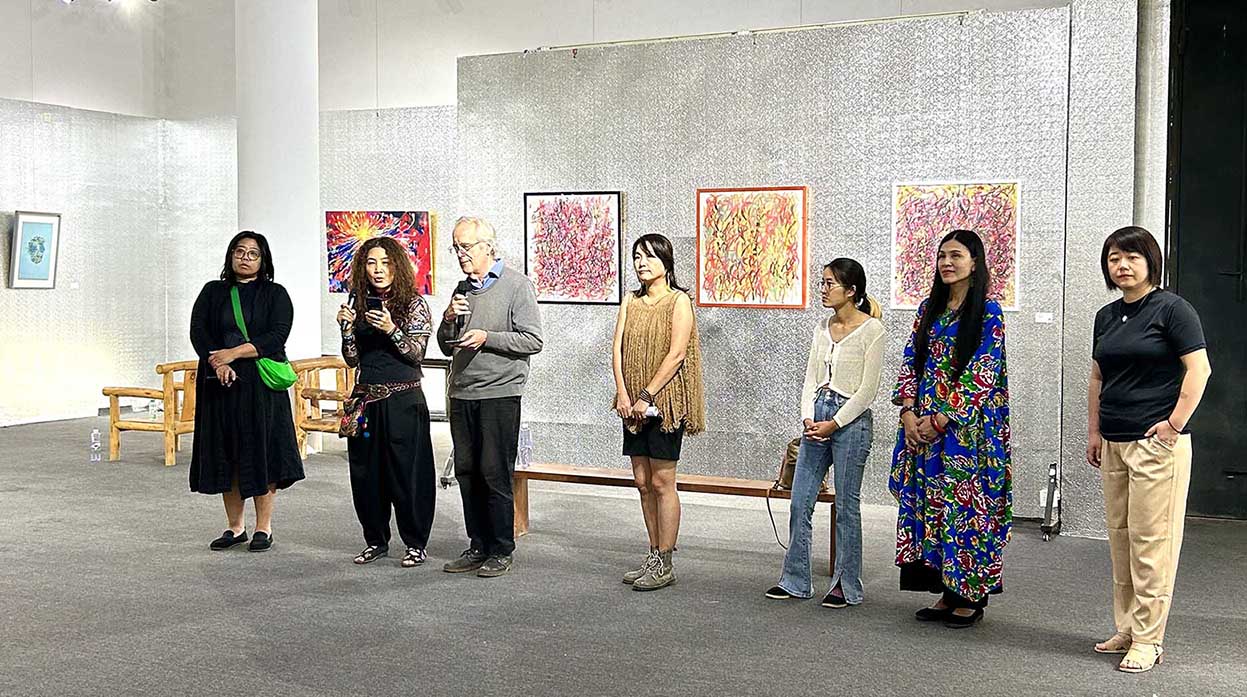
“The Property of a Flower”By David BrubakerWhat do flowers represent and symbolize today? How do women use them in making their own art about contemporary life? In “The Property of a Flower,” women offer answers. With paint, fiber, glass, photographs, printmaking, video, and multimedia, these artists breath life into present times.Many of the artists express feelings about cycles of growth, blooming, and passing away. Liu Na suggests the period of gestation with her fiber work “The Roots of Life,” while Zhao Yajie uses colored glass to explore feelings about embodiment and reproduction. Wu Jia and Peng Yi emphasize blossoming in life by making colorful fireworks and starbursts. This vitality appears in Sun Peng’s photograph of magnolia leaves; the color of the magnified leaves suggests a pure heart. The briefness of full bloom is a theme in Han Qi’s delicate paintings and Wang Shuai’s vibrant color photographs of blossoms. The topic of the multimedia installation by Liu Shuming is the steady unfolding of life; globes filled with images of skirts in different styles mark on-going decades in her grandmother’s life. Yao Lishuang also suggests development with her symbols for paths of movement. By painting flowers in skeleton-like patterns, Qu Weiwei offers thoughts about passing on; returning to the earth is a cycle that supports new life.Another theme is the presence of flowers in everyday dwelling. Wang Haiyan paints vivid red petals of flowers in a vase on a table top. Dong Xiaoli also paints flowers in vases; but her large canvases include the household environment, so the beauty of flowers is within the spaces of daily life.Meditation and realizing one’s own nature in actual life are also explored. In Chen Yu’s Meditation Garden series, flowers are a source of peace; the wide and almost formless leaves suggest a path for reinterpreting the relation of self and the realm of nature. In “Garden of Intension,” Li Junyi paints the flower with no name that is between color and form. Wang Haidi writes that her prints of banana leaves point to a mysterious space; the overlapping leaves link real existence with the realm of the void. Tao Aimin applies a calligraphic script from Jiangyong women to create leaf-like strokes in painting; she points to the everyday work of women and speaks for them to break through darkness to find the light of freedom. Using lithography, Han Shuying has created a flower with human and animal figures that are joined with a creativity and curiosity that raises thoughts of Hieronymus Bosch. Finally, with innovative batik techniques, Liu Bing Ling presents a flower that symbolizes finding your heart and letting the vitality of life appear in the universe. Four artists develop themes related more specifically to the natural environment. Wu Jing’s soft wool weavings produce a mysterious or dream-like harmony with mountains and waters; one of these works is presented in digital video. Cheng Xiaobei paints trees full of life amid mountains; the result is a feeling of connection that leads to thoughts of wandering in nature. There is Sun Shaokun’s powerful performance recorded on video years ago; corn is transformed from a material thing into art that supports the spiritual practice of cultivating harmony with the earth. Finally, in one photograph, a sparking blue-green structure joins neighboring trees at twilight; Ludwika Ogorzelec reminds viewers that they are in the space of natural environments.In this exhibition, flowers are not merely beautiful things. For the artists here, they offer ways to communicate the value of natural life in all of its moments and cycles. Even a single petal manifests a unity with the present where life is most manifest. 2023-9-17
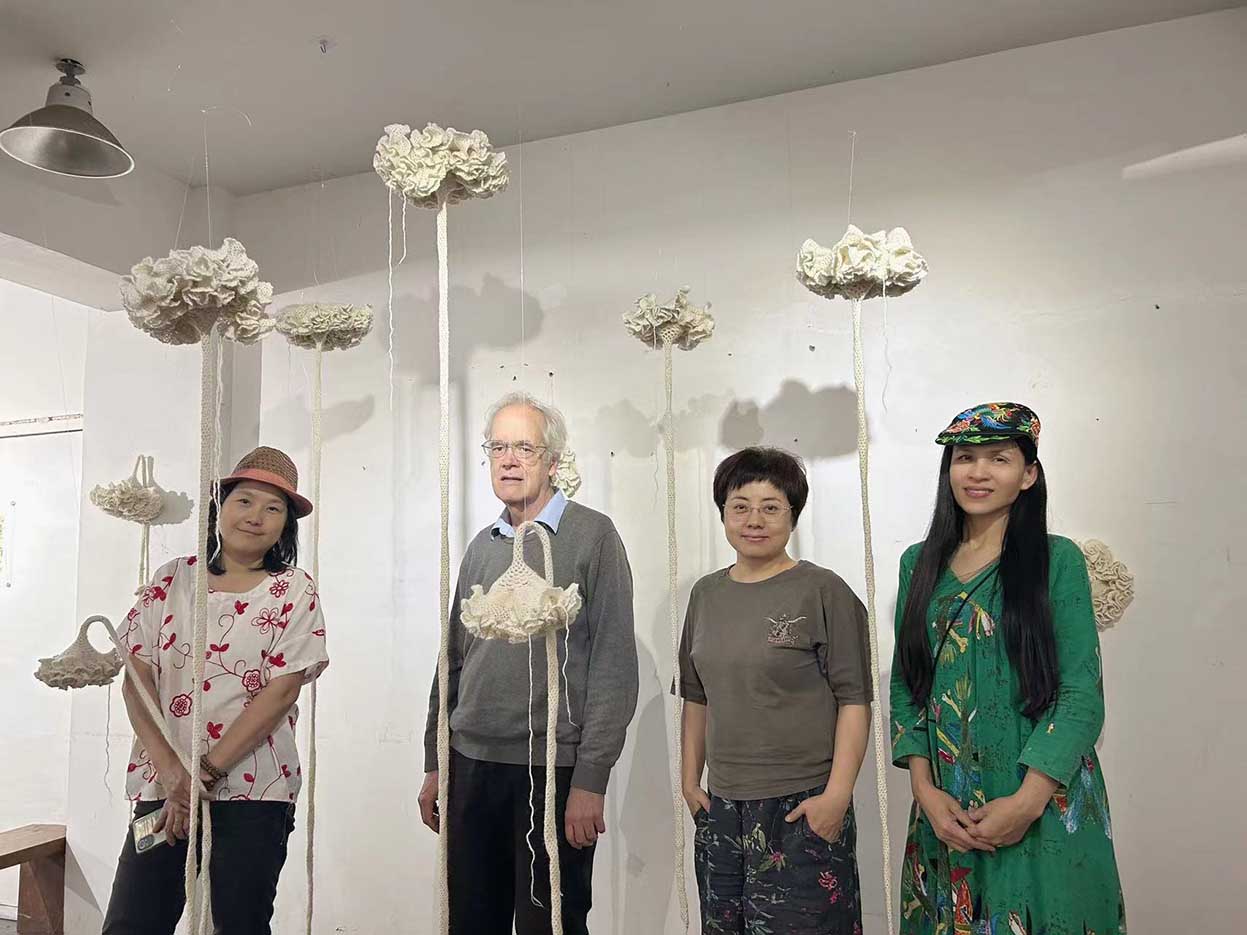
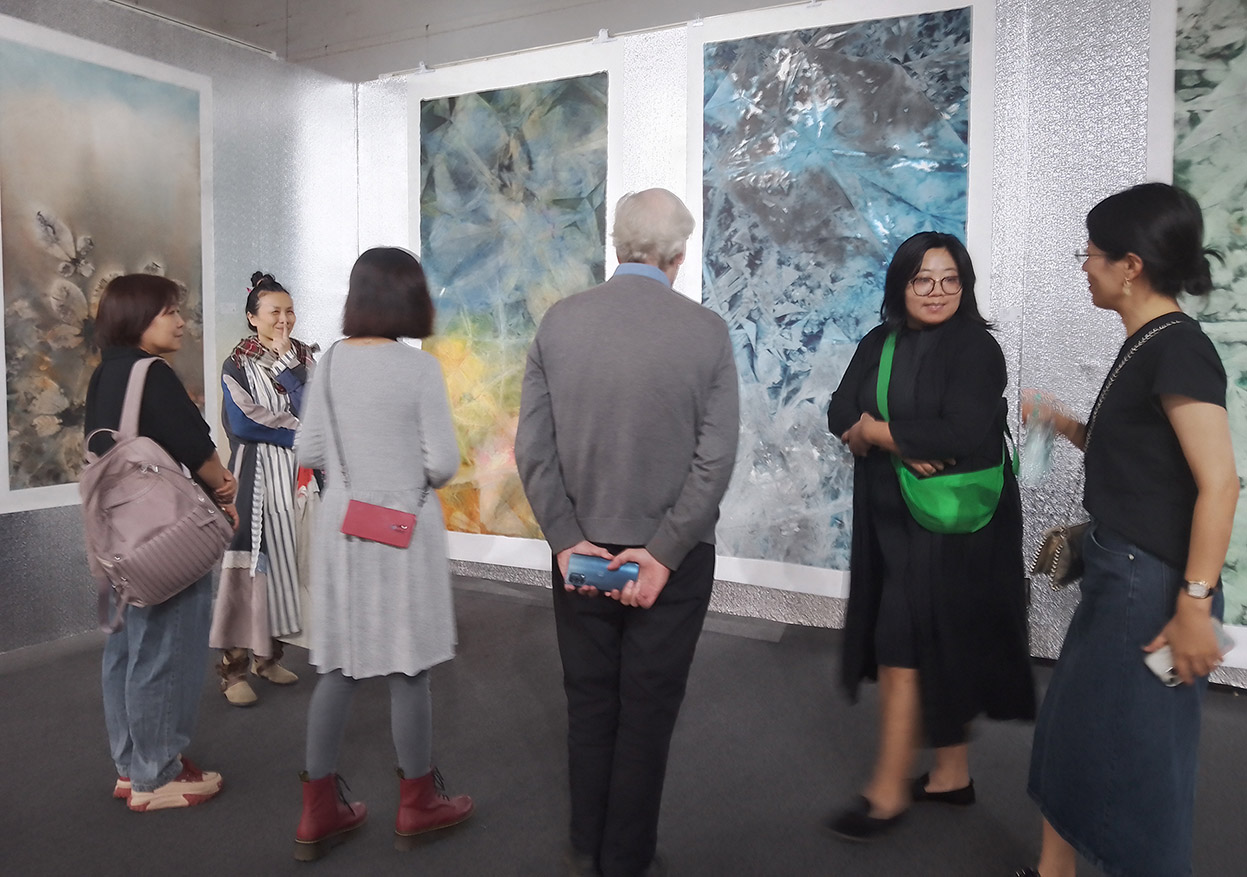
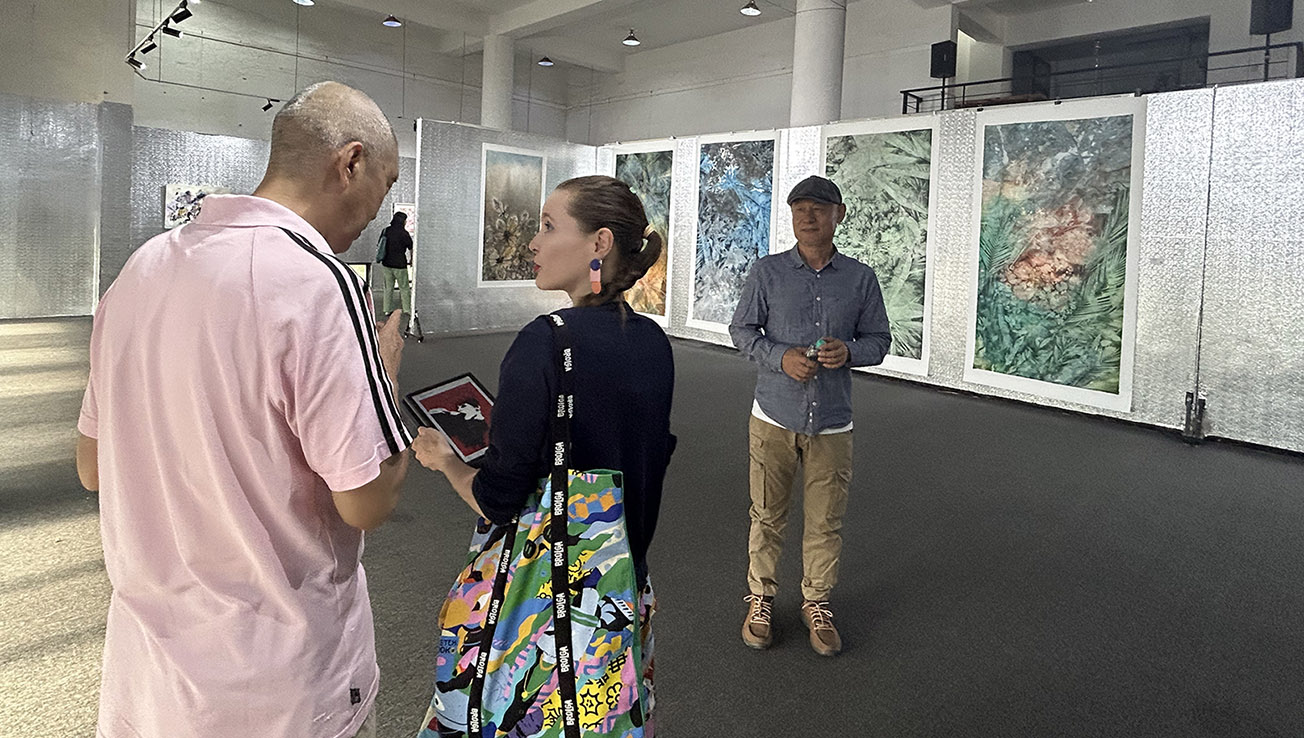
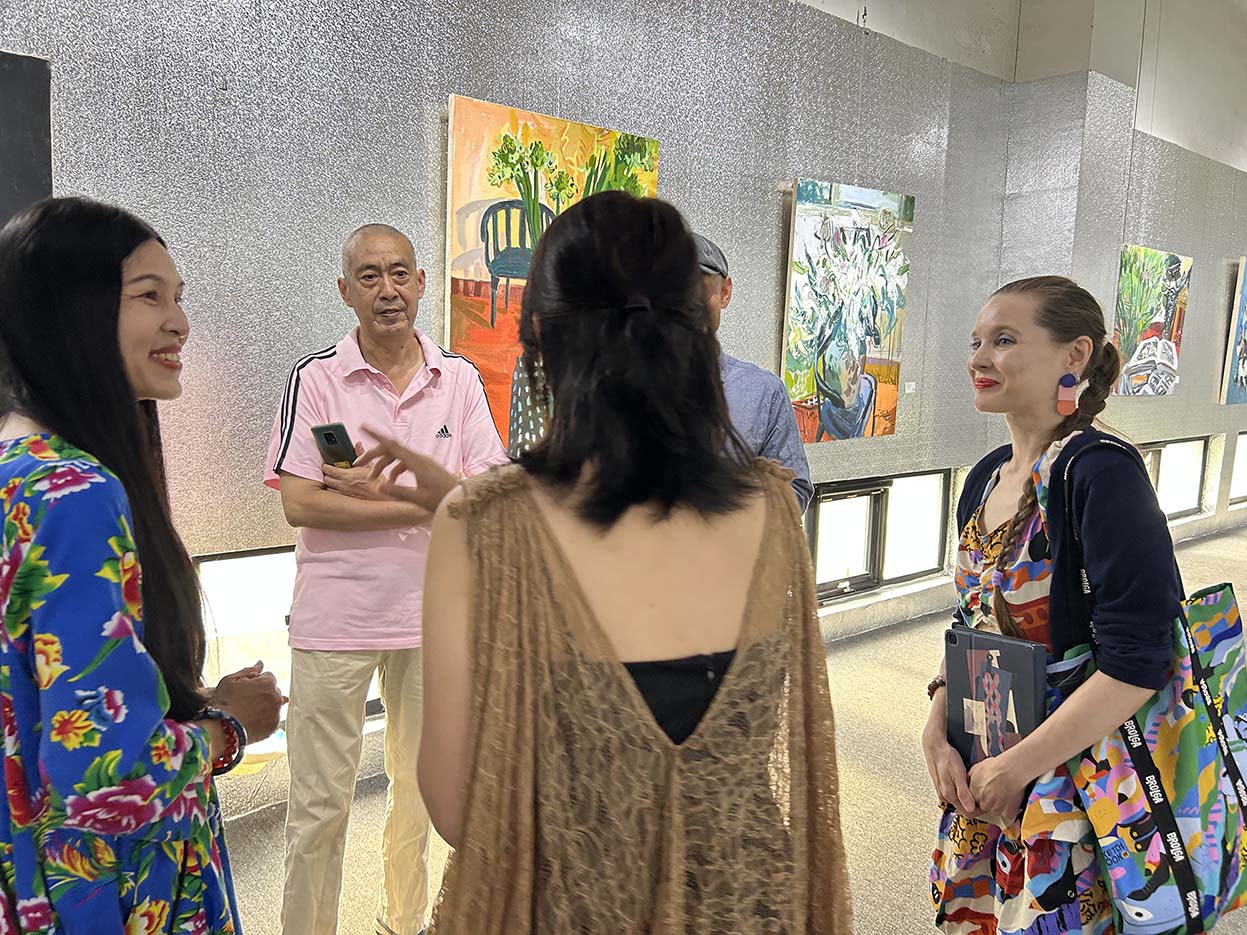
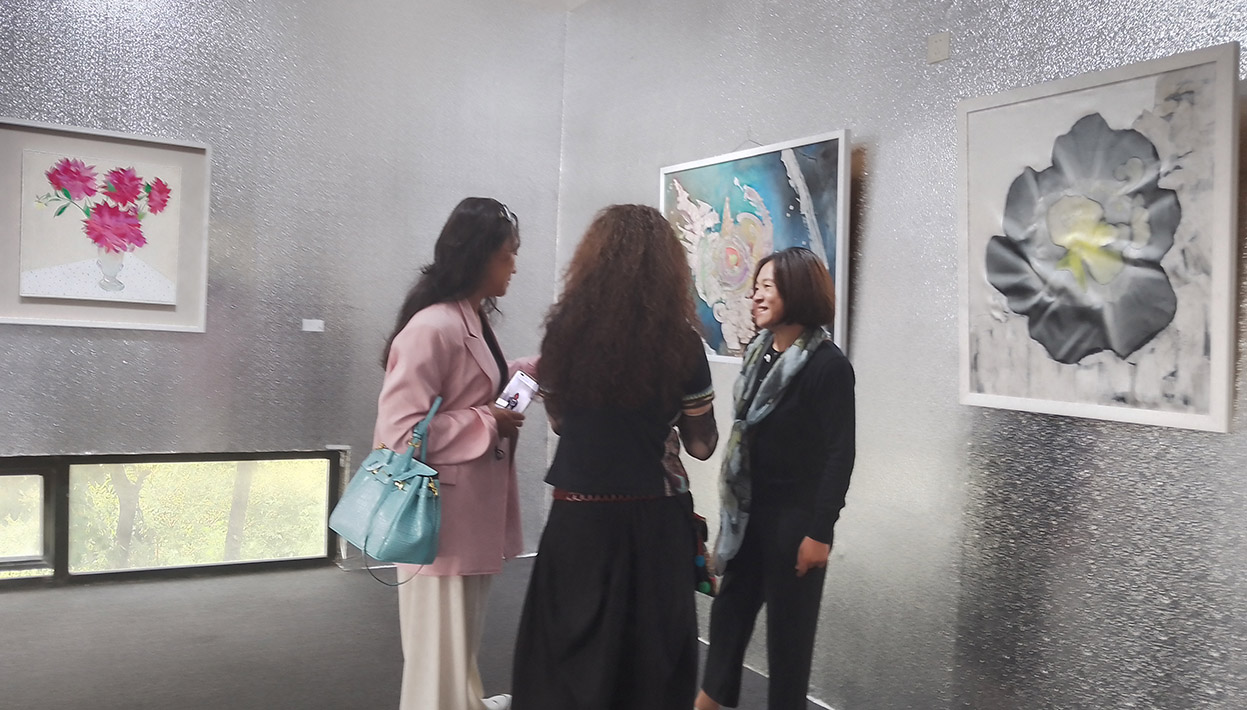
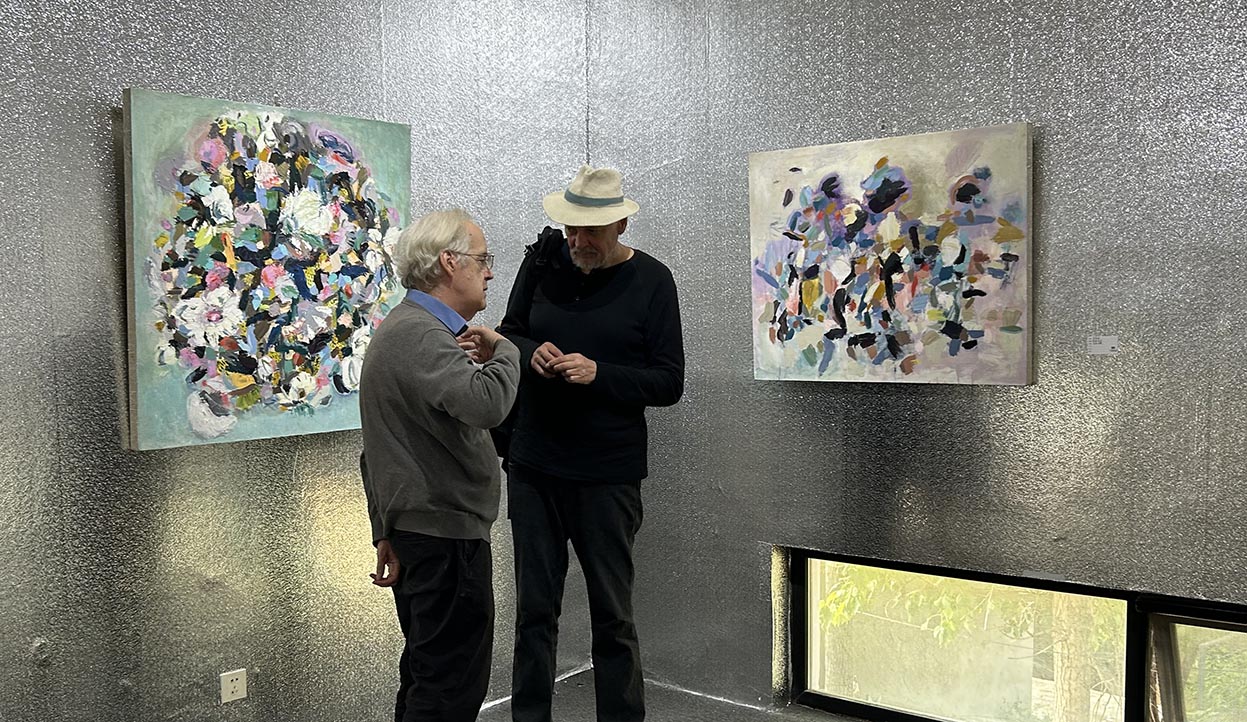
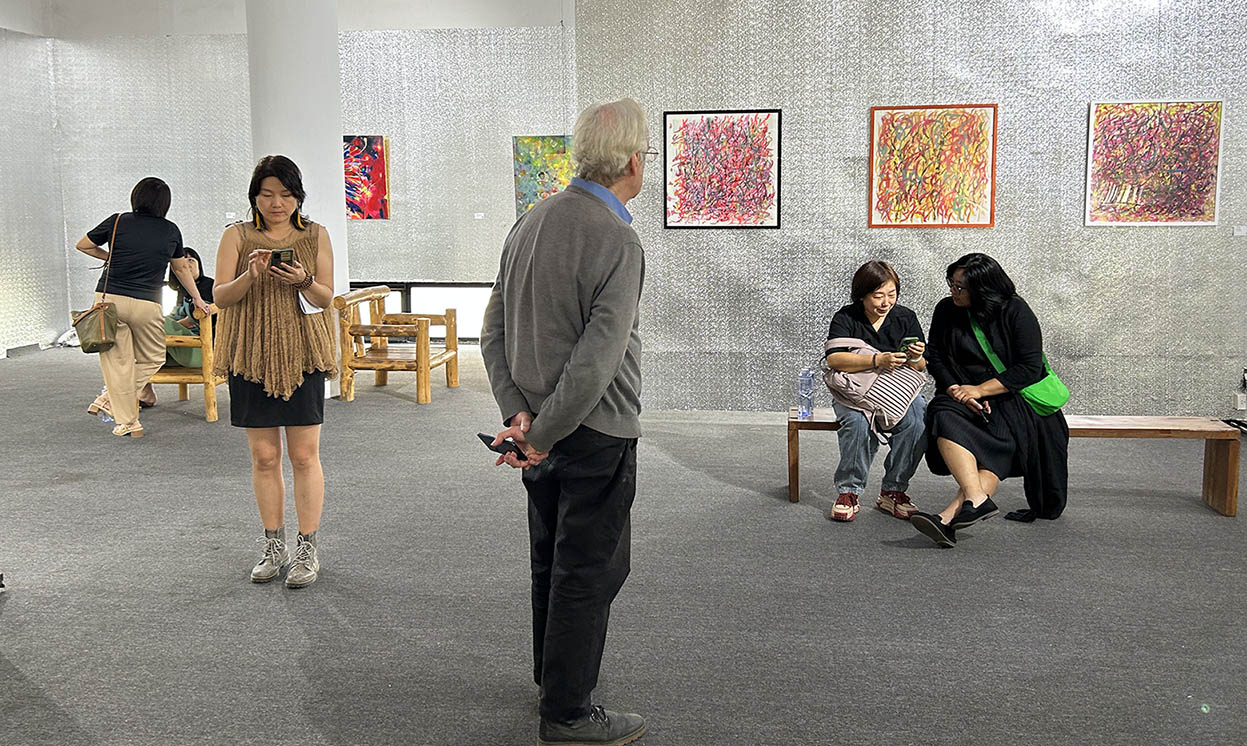
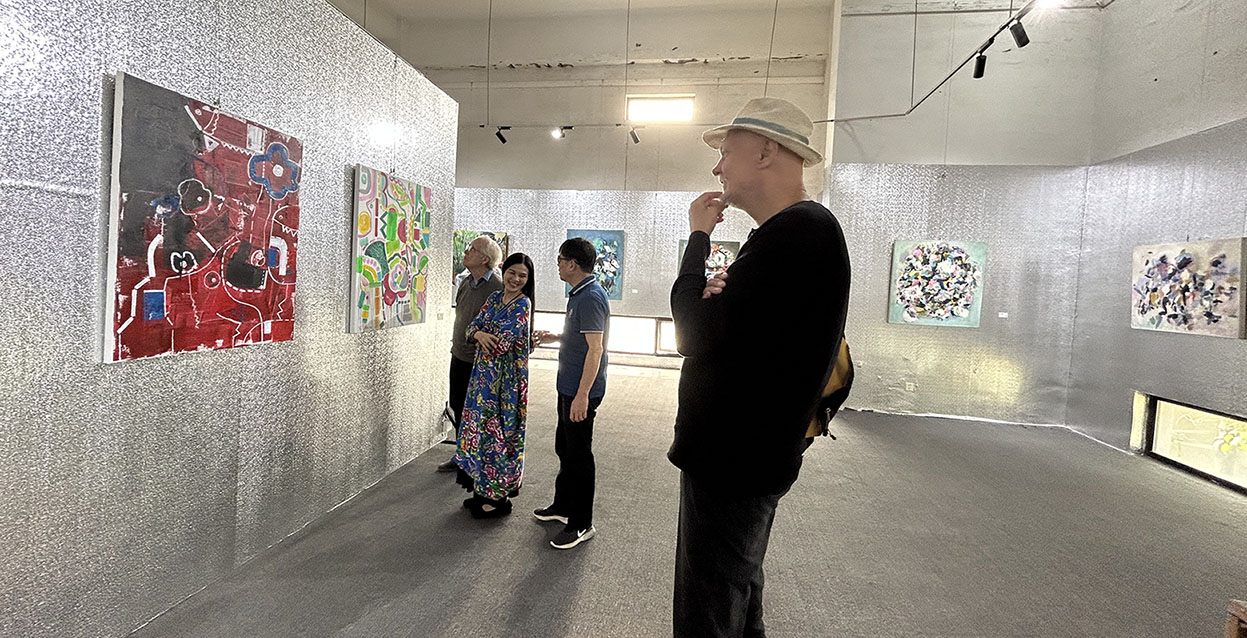
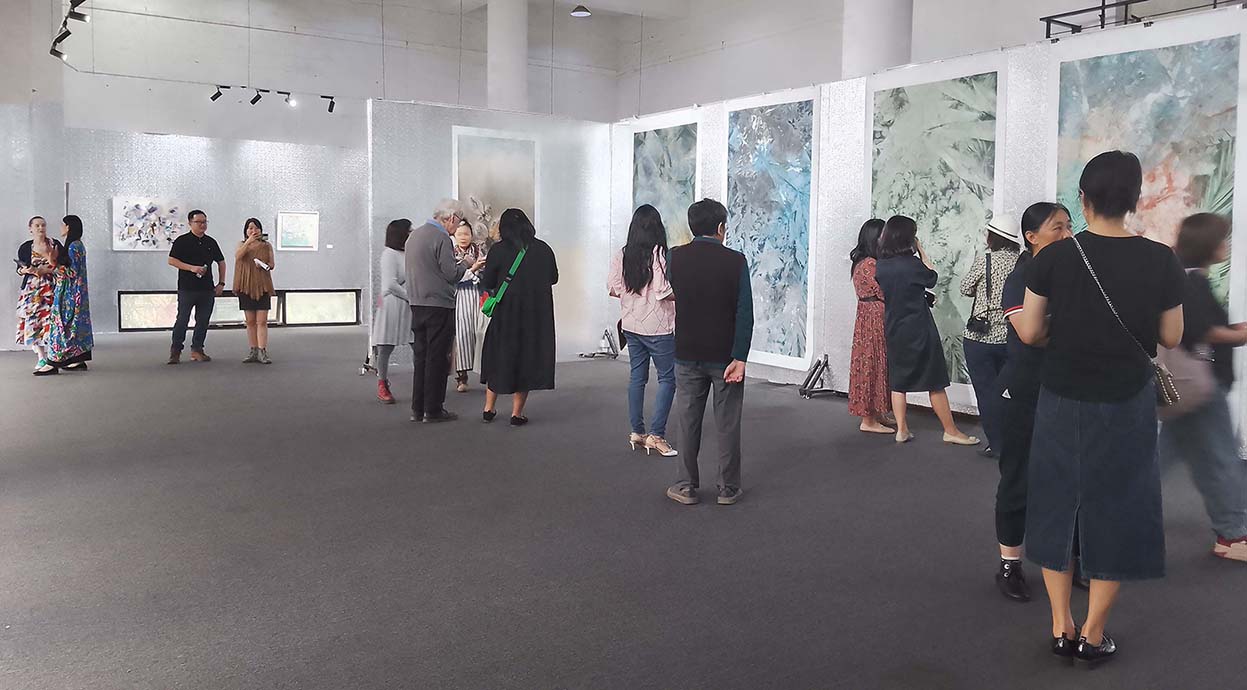
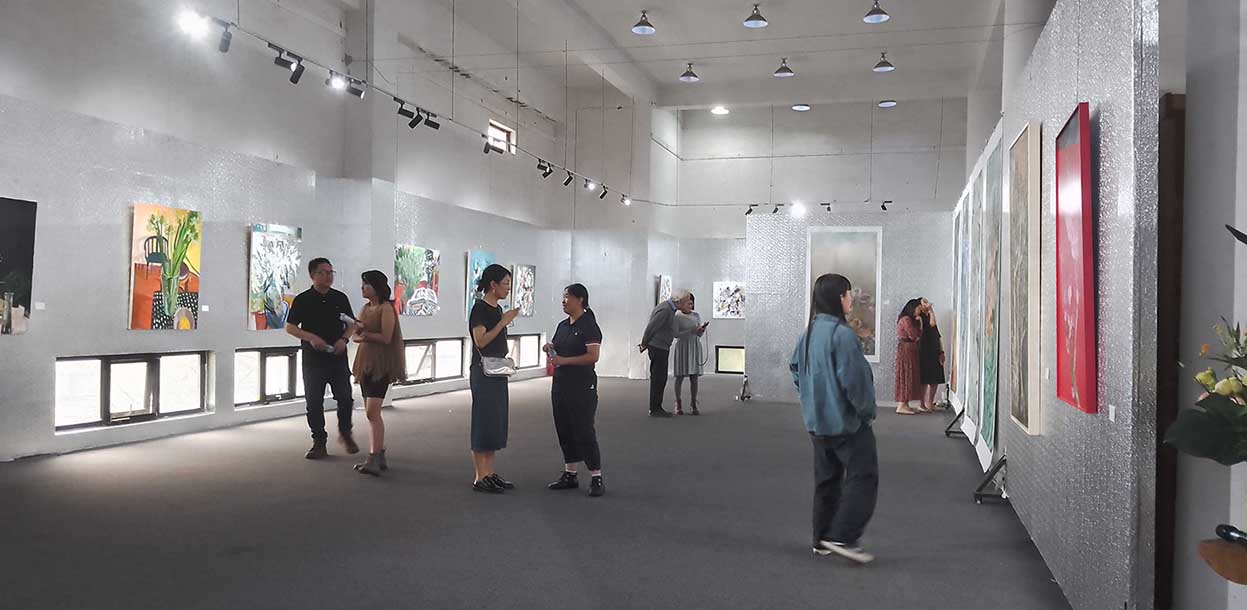
作品選
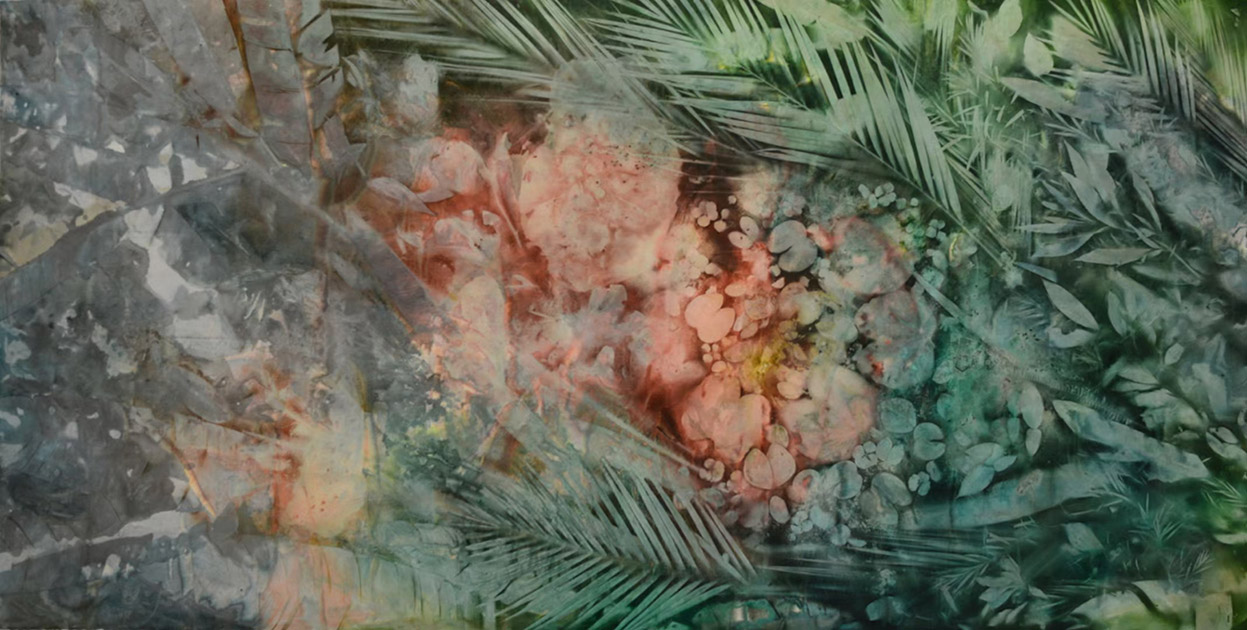
陳魚作品
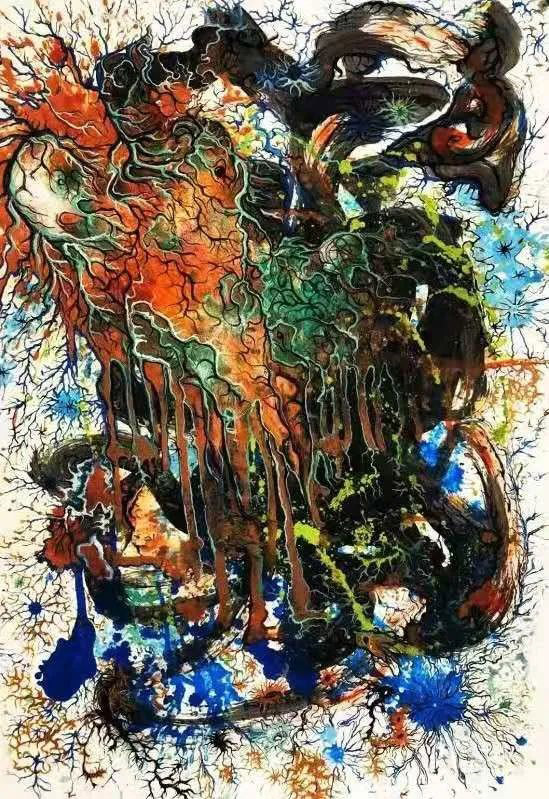
程小蓓作品
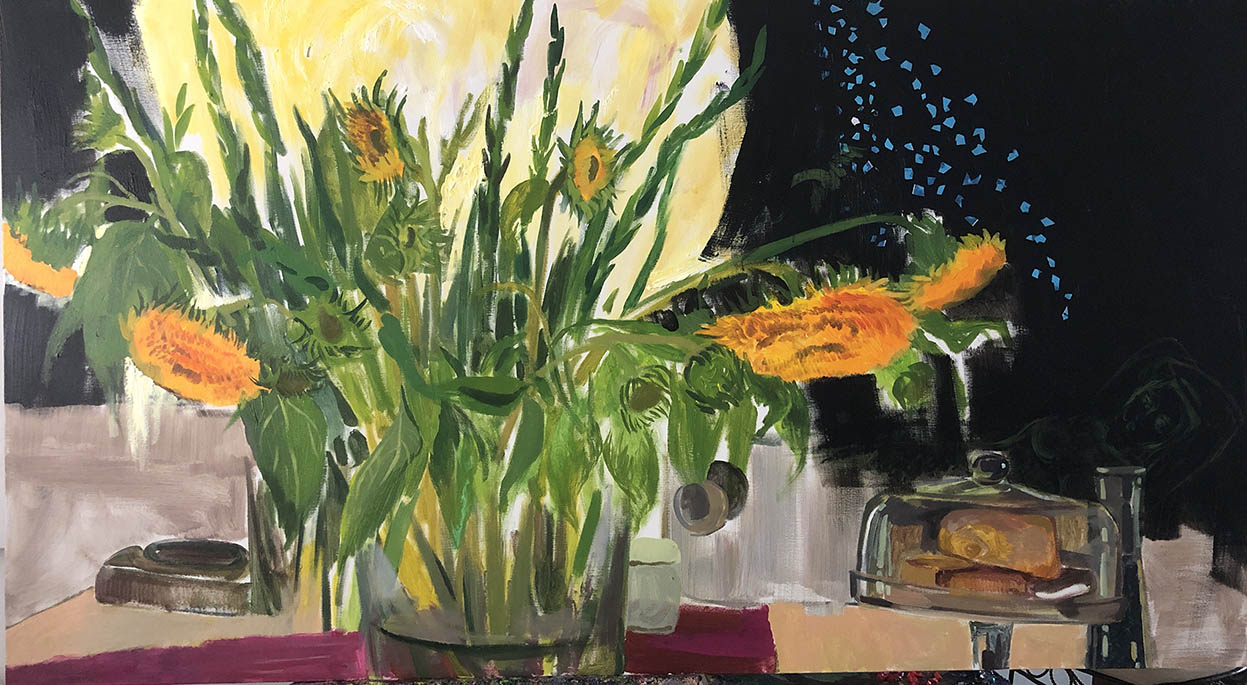
董曉麗作品
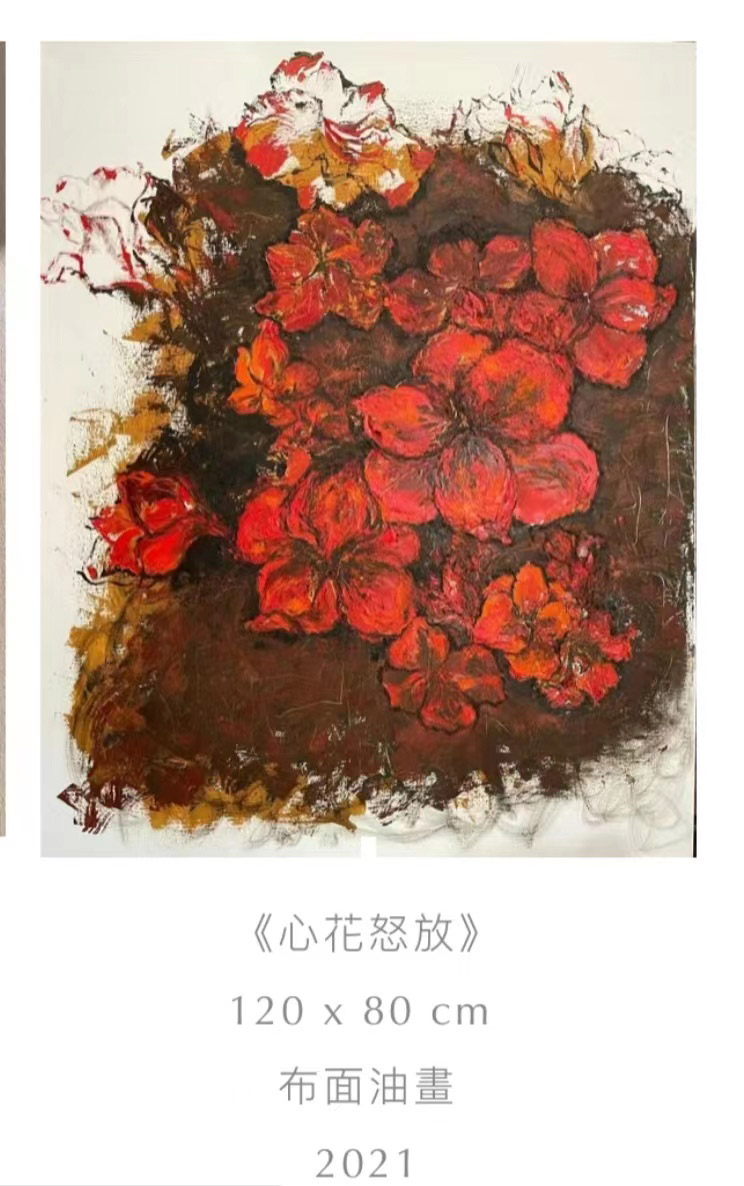
韓祺
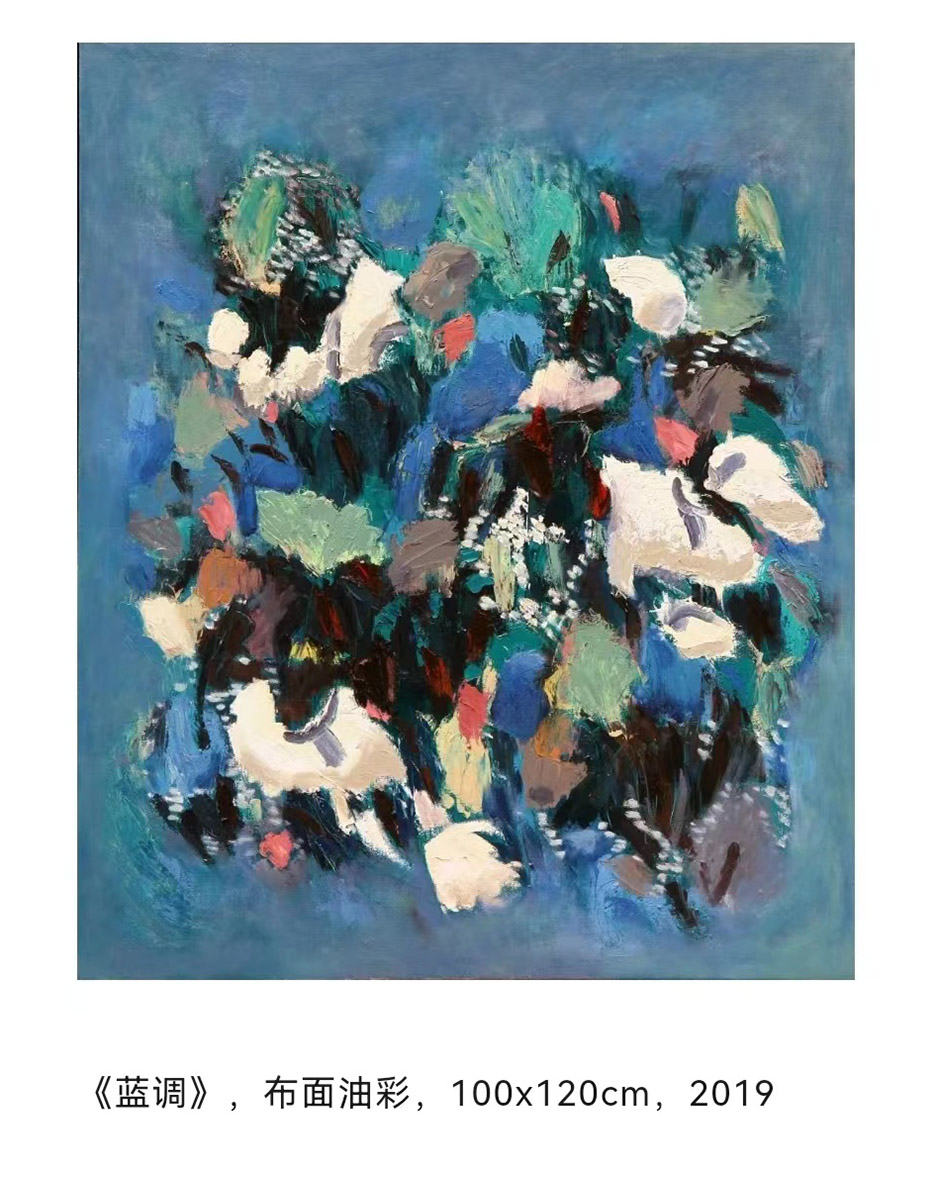
李俊誼
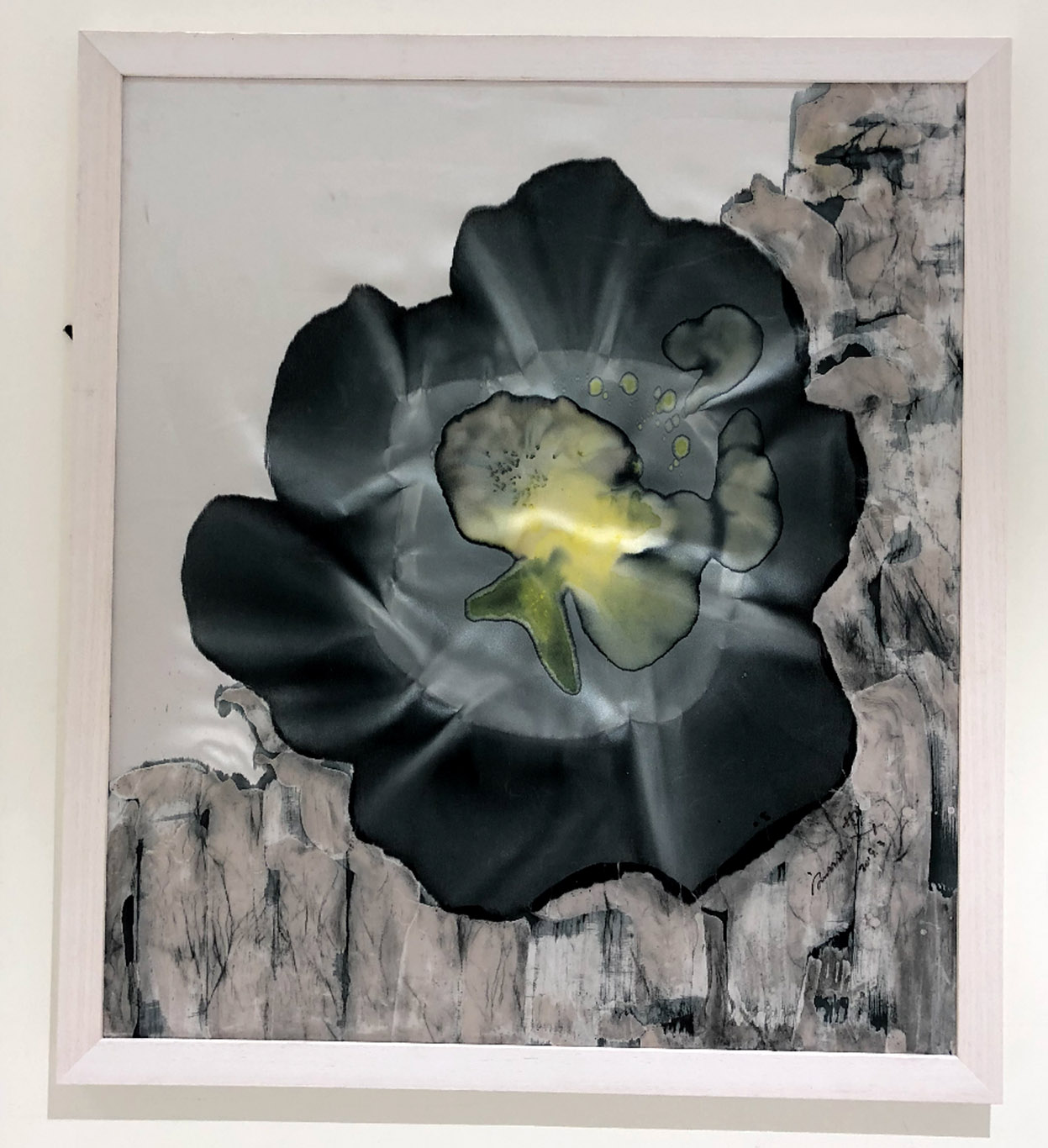
劉冰凌
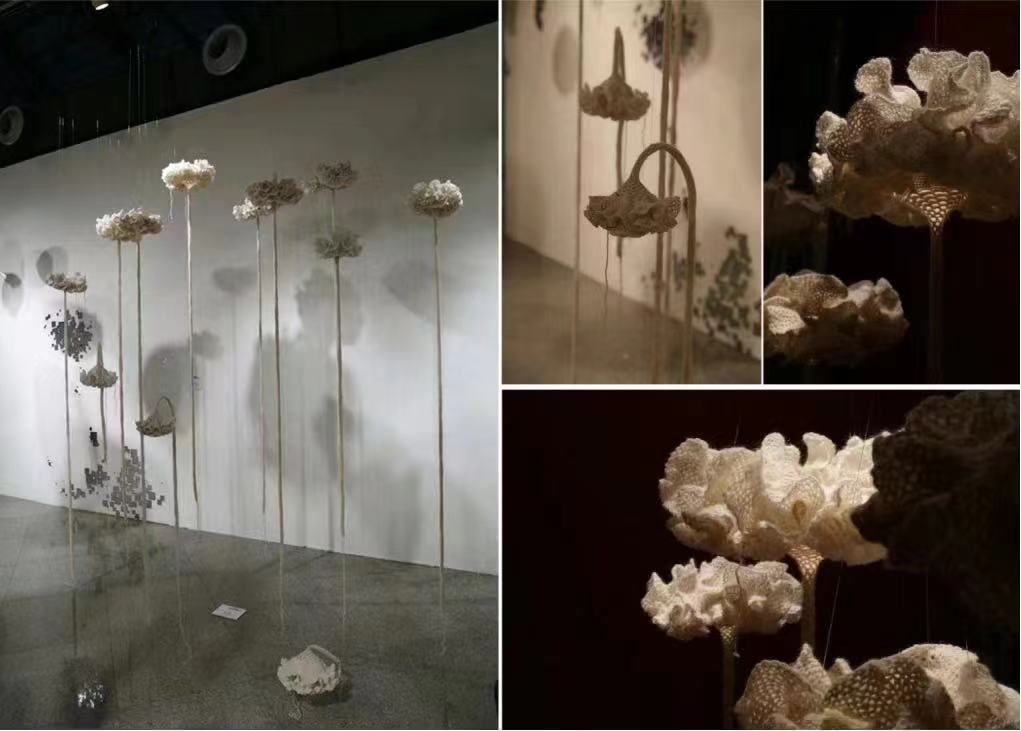
劉娜
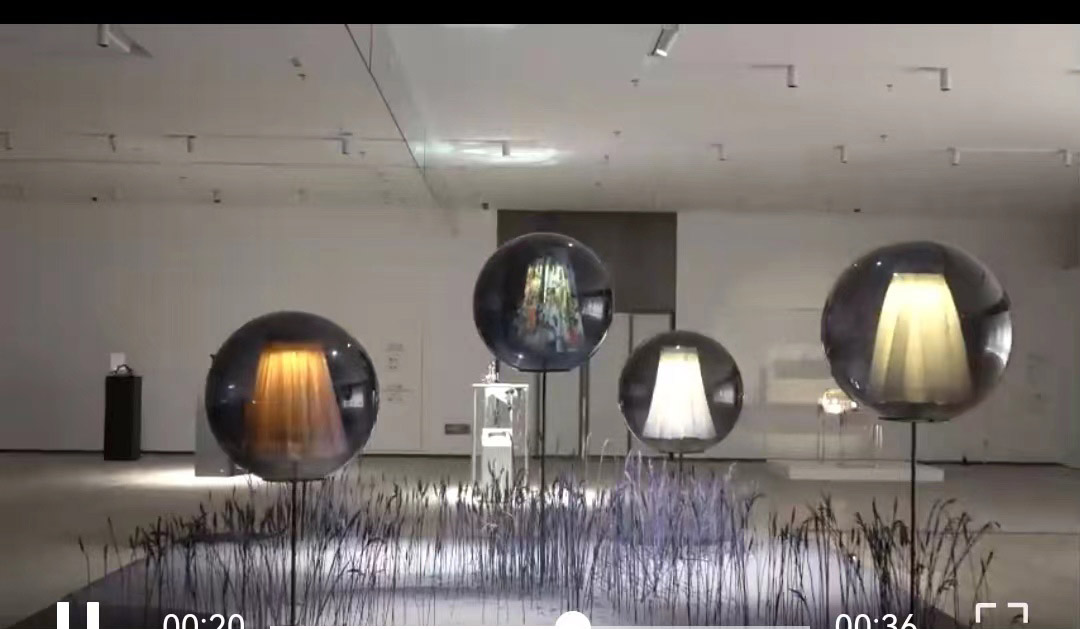
劉姝銘
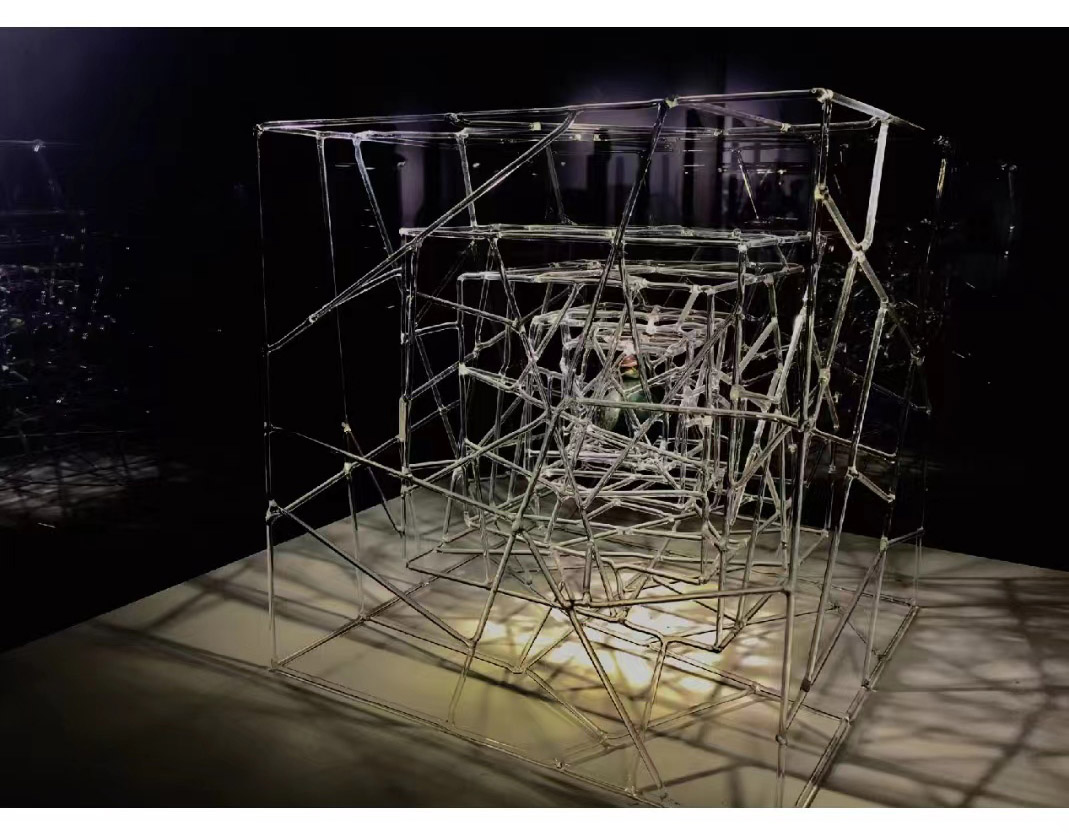
彭怡作品
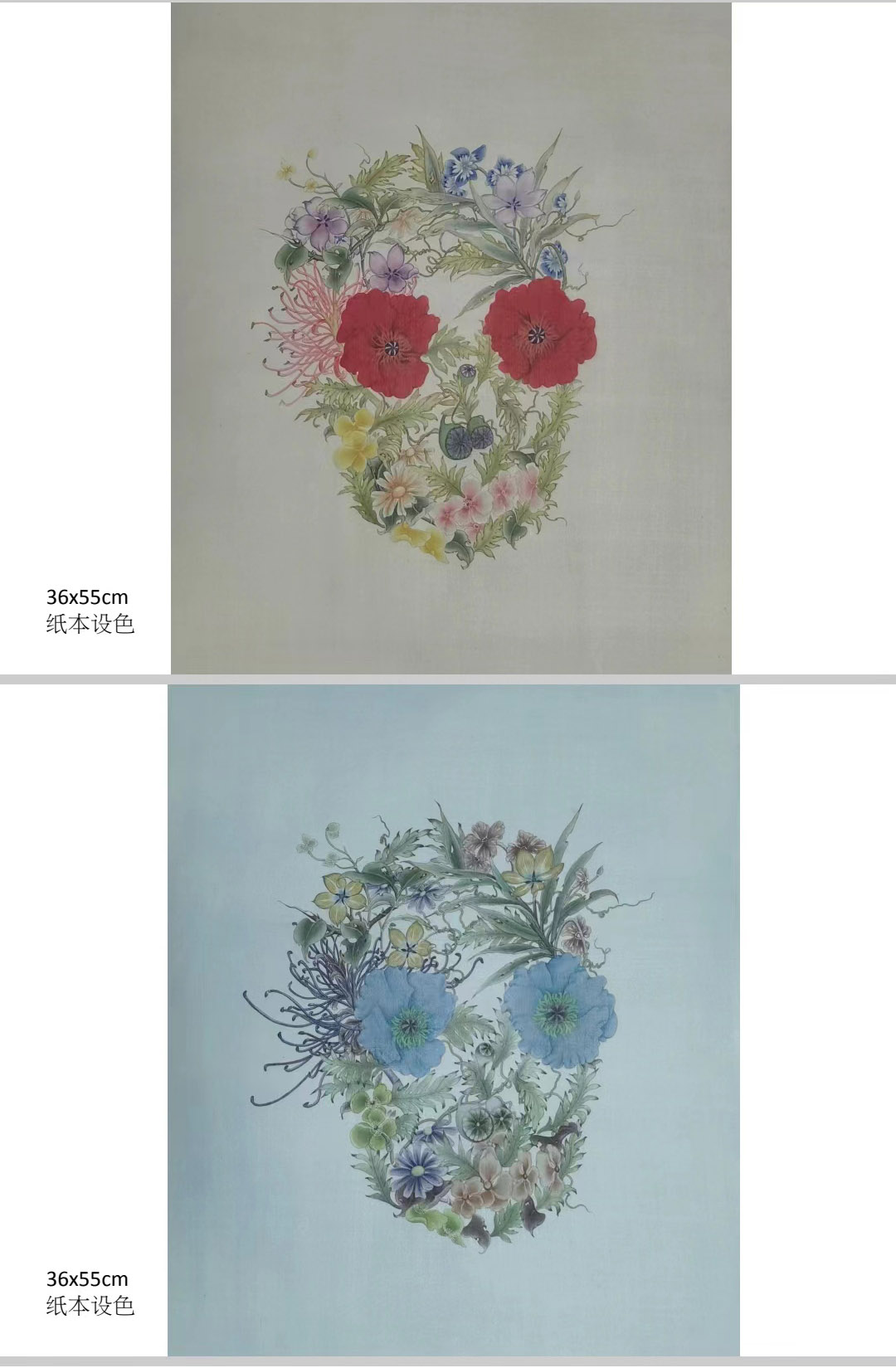
曲薇薇作品
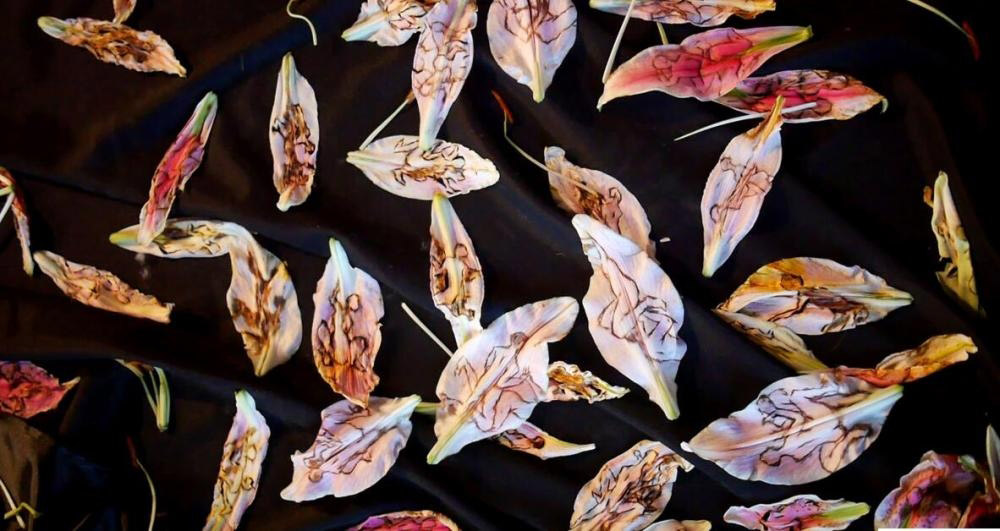
孫少坤
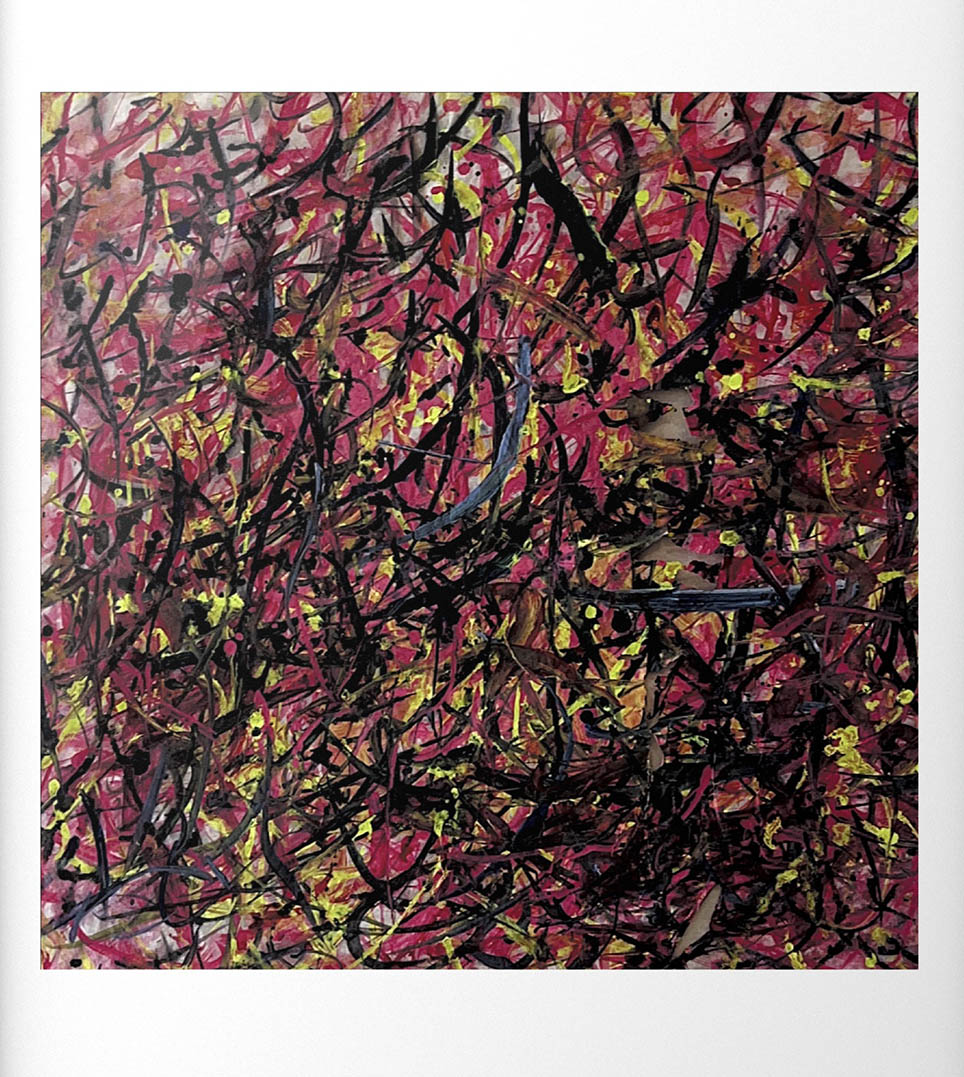
陶艾民
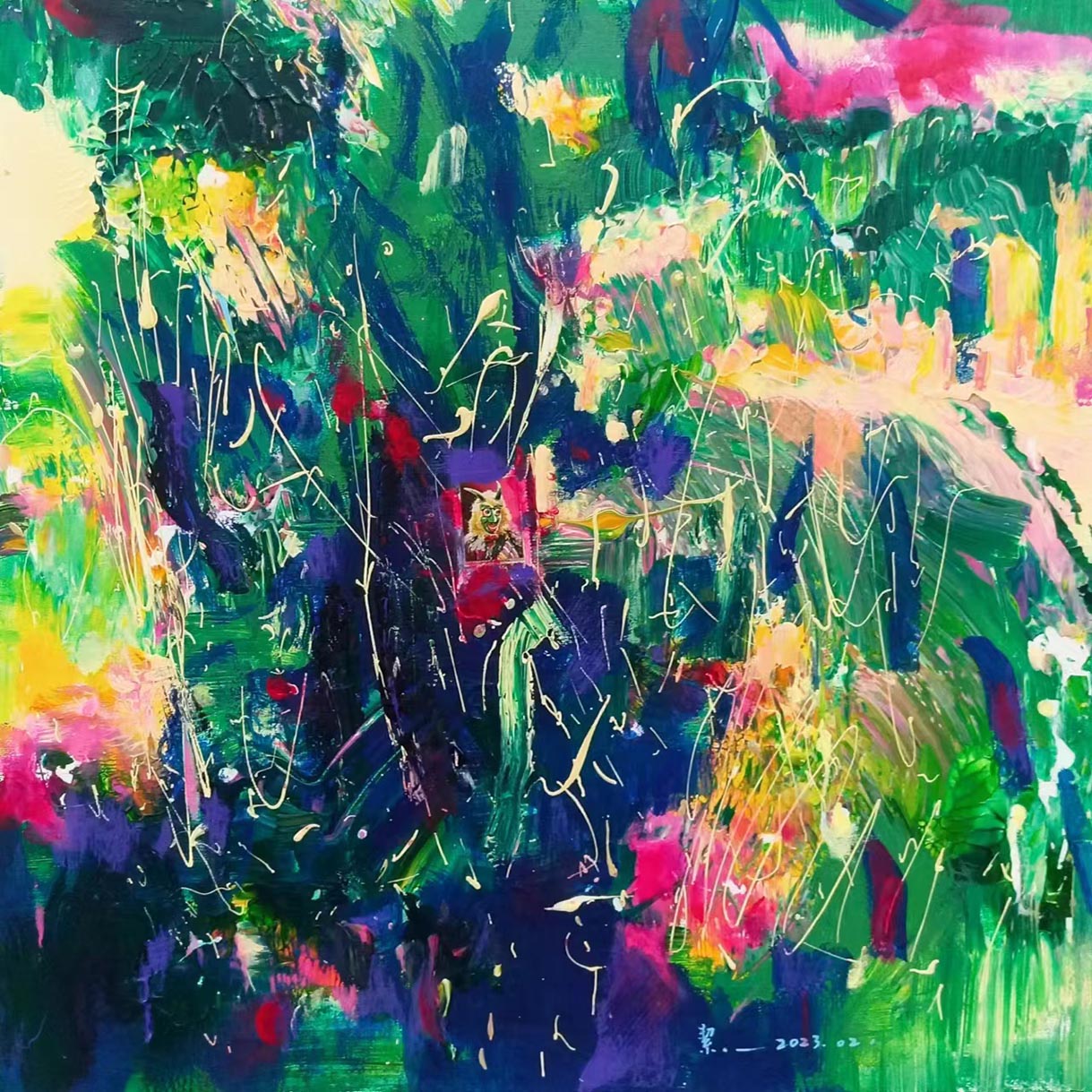
吳潔
🌸🌼🌻🌺🍀💐🌹🌈⭐
每一朵花都是不一樣的存在
文:段少鋒
近幾年來關于女性的展覽很多,這些展覽或關注女性藝術家 ,或關注女性主義。2022年舉辦的第五十九屆威尼斯雙年展就具有很強烈的女性主義傾向,前不久在中央美術學院美術館也舉辦了主題為“多維的感性”的女性藝術展。在數量龐雜的女性藝術展,甚至于文化領域近年來出現了大量的關于女性的專門出版,比如上野千鶴子的在中國的走紅,前段時間《芭比》的熱映讓女性話題再次成為全球性熱點,可見藝術中關注女性不是個案,而是一個時代發展的總體結果。以威尼斯雙年展中國館的歷程中女性比例和近年來Hyundai Blue Prize年度策展人獎女性比例對比為例,我們不難發現年輕一代中女性在中國當代藝術的創作與研究中扮演了越來越重要的角色。 在這一時代大背景下韓淑縈策劃“花朵的屬性”女性藝術展的必要性就不難解釋了。本次展覽的可貴之處在于呈現了女性藝術家中那些剛剛從學院畢業的年輕的藝術家群體,這個展覽的代際跨越使得這個展覽可以管窺中國女性藝術的一個有效窗口。另外本次展覽具有很強的策劃屬性,策展人以花朵作為策展切入點,選擇了不同藝術家對于花朵的描繪。為什么要選擇花朵是有趣的構思,因為女性從文化史以來就被賦予和花的象征的緊密聯系,通俗文化中梅艷芳曾有一首歌便稱作《女人花》,在更深層次來講,從生殖崇拜來看,花朵象征著女性。女性常常被比作花朵,這種比喻常常出現于文學寫作,女性賦予了花朵不同的文化含義,這些含義或正向或負向,其實帶有一種男性視角。女性如何看待花朵,表現花朵,其實就好像女性在觀看自己,理解自己一樣。本次展覽藝術家的繪畫中花朵一定是不同的,或寫實,或抽象,或象征,這些不同的花朵構成不同的藝術家屬性。花朵的屬性在我看來本質上是藝術家的屬性決定的。一朵花的美麗和衰敗、脆弱與堅強、燦爛與落寞都是伴生在每個女性對于生命的不同體驗中的。女性理解花朵不再是因為女性被拿來和花朵做對比,而是她們主動的綻放自己,表達自己。 每個花朵必定是不一樣的,我想起了幾年前我在未名湖畔用影像記錄下詩人西川讀的一首詩,我在此借“花”仙佛,獻給各位藝術家,詩歌名為《開花》,西川讀到:開一朵不夠開三千朵開三千朵不夠開十萬八千朵開遍三千大千世界
revealed 937 times
|
